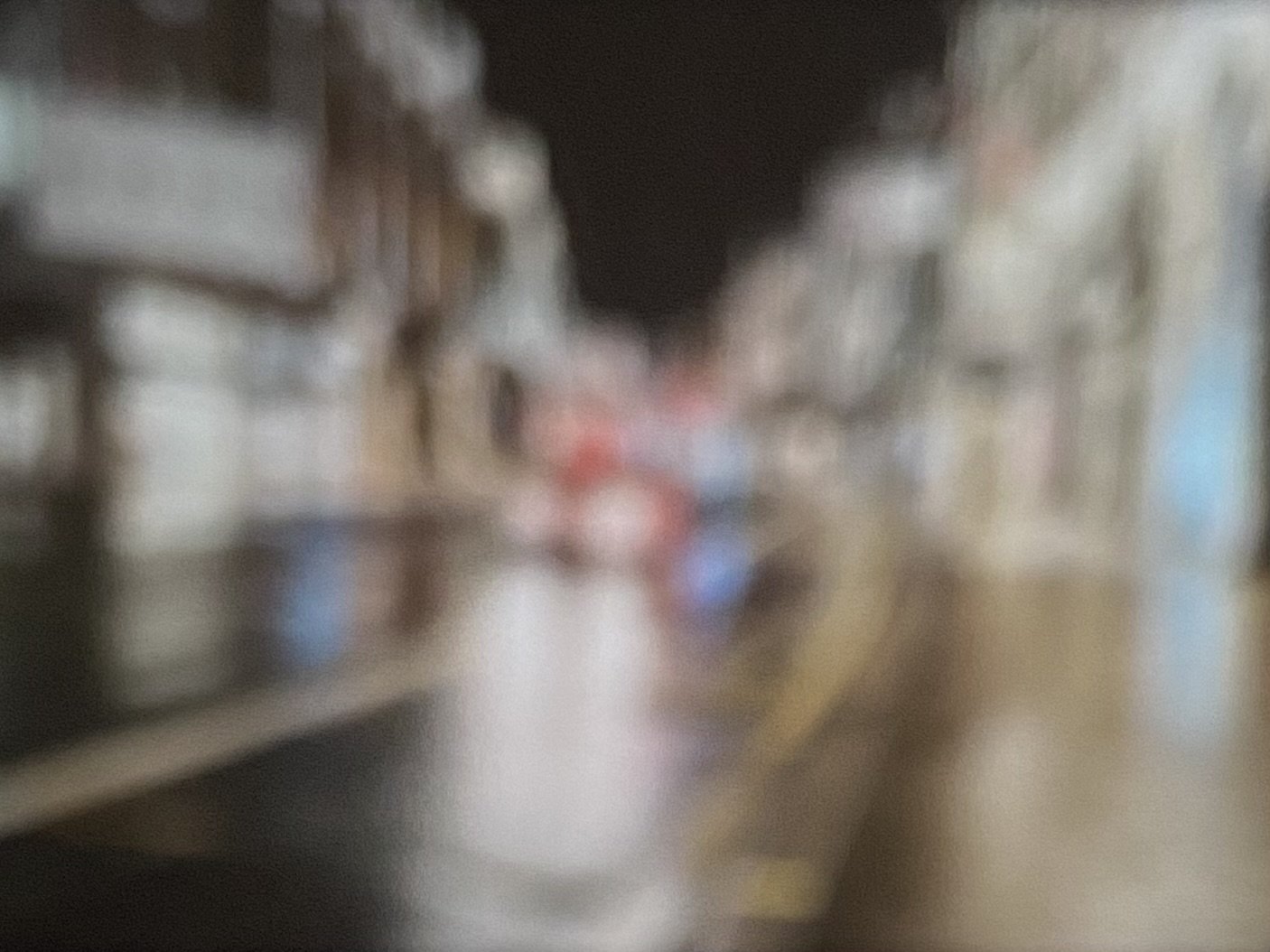Do Pinhole Glasses work?
This is an example of a person with relatively poor eyesight who isn't wearing glasses. The photons are landing scattershot throughout the retina, with some hitting and some missing the central target.
Think of photons as little particles of light that carry information about the visual appearance of an object. And think of the eye as being a big bowl designed to try and collect these particles. The bowl is essentially divided into two zones: a large outer region and a small central cup. For an object to be seen by the eye, a large number of particles originating from the object need to enter the eye and land anywhere in the bowl. But for an object to be seen clearly by the eye, the majority of these photons need to land in the small central cup, termed the fovea. Some photons will be headed straight for the fovea and will be unaffected by any eye imperfections that would otherwise knock them off course. Other photons that aren't so optimally directed will not be so lucky, and will ultimately miss the small central cup and instead land in the large outer ring-like region of the bowl. The higher the percentage of photons that land in the small cup as compared to landing in the outside ring, the more clear the image. But equally as important is the total number of photons that make into the bowl at all, since they all contribute bits of information that help the eye create a bright, large image of the object.
An eyeball of person who doesn’t require glasses has all the properties to not only corral the most possible photons into the bowl (eye), but also make sure the vast majority hit the small central cup (fovea). An eyeball with very poor vision likely can still gather alot of photons into the eye, but is unfortunately unable to guide them into the fovea, leading to a very blurry, although fairly bright image. So how do pinhole glasses work? The tiny hole(s) in pinhole glasses only allows the most optimally direct photons to enter the eye, the ones that are on a bearing headed straight for the fovea with no help from the eye required. Since all objects emit a few of these optimal photons, the pinhole simply blocks the non optimal ones so the eye can achieve a very high ratio of central cup-to-outside ring strikes, as almost no outside ring strikes can occur because the pinhole occluder is blocking them. Remember the higher this ratio, the more clear the image. But for what the pinhole makes up for in clarity, it is equally detrimental in terms of image quality. Since only a minuscule number of photons are allowed to pass through the pinhole occlude, all the photons that are turned-away are unable to enter the bowl at all and therefore unable to contribute to the object's brightness and quality. This results in a clear but dim and poor quality image. Normal glasses on the other hand will corral and perfectly direct almost all of the photons into the eye and towards the fovea, resulting in a very clear image and a large, bright field of view.
Pinhole glasses simply block any photon that isn't aimed directly at the fovea. This results in only a few photons getting through to the target.
Normal glasses work by redirecting misdirected photons towards the fovea. This process is termed refraction.
So pinhole glasses do work, in the same way that an old Sony Walkman at a high enough volume will allow people in the room to hear clear music. It's just that there are more properties to music than just it’s clarity, and wearing normal glasses is akin to walking into a theater while the orchestra is playing live.
Dr. Burke is an optometrist practicing at Calgary Vision Centre. Opinions above do not constitute medical advice, and readers should consult with their optometrist if they have questions or concerns about their eye health










